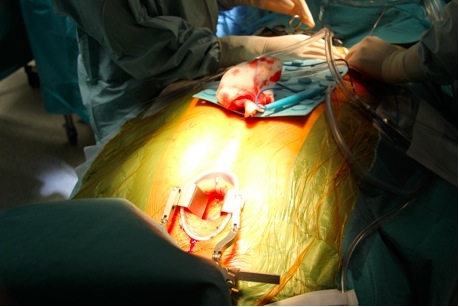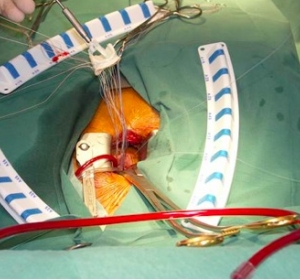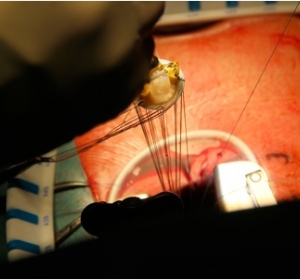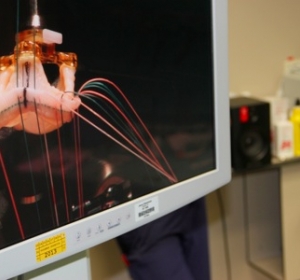Who is a candidate for Mini-AVR?
Every patient in need of aortic valve replacement is a candidate for this minimally invasive procedure.
Mini-AVR methodology
Traditionally an aortic valve is replaced by means of a median sternotomy. Mini-AVR is performed with a median incision of only 4-to-5-cm and the sternum is only partially divided (hemi-sternotomy).
The artificial valve is sutured in place using the parachute technique.
Results
Compared with patients undergoing aortic valve replacement with a median sternotomy, Mini-AVR offers more than just cosmetic advantages:
- Patients experience less pain after surgery (stable chest) allowing improved respiratory function in the immediate postoperative period
- Less time on the heart-lung machine
- Shorter ventilation period
- Less blood loss and therefore less blood transfusion requirements
- Shorter stays in the intensive therapy department
- Shorter hospital stay
- Faster recovery
- Faster resumption of normal activity and faster return to work
From March 2013 to March 2015 our department performed 166 Mini AVR procedures. With none of these patients a conversion to a full sternotomy was required. On average, the hospital stay of patients undergoing Mini-AVR was 3.8 days shorter than that of patients undergoing a full sternotomy for aortic valve replacement.
Conclusions
In addition to the cosmetic benefits, there are clearly other essential advantages to the minimally invasive technique described above.
These benefits do not compromise the short and long term survival of the patients compared with the group of patients undergoing aortic valve replacement the conventional way (median sternotomy).




